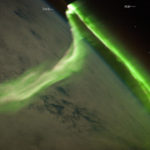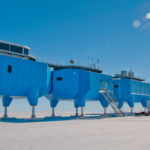Several kinds of natural waves in the ultra-low-frequency (ULF) range are generated in Earth’s space environment (the magnetosphere, bounded by Earth’s magnetic field as it extends into space). Most of these can penetrate the atmosphere and be detected on the ground by search coil magnetometers.
Monitoring wave activity using a search coil magnetometer can tell us lots about activity and energy flow in Earth’s space environment. One type of wave tells us about interactions between the solar wind and Earth’s magnetosphere. Another type is generated in association with bright auroral displays.
Waves provide evidence of nearby auroras even when clouds prevent visible light from reaching the ground. Yet another type of wave is generated at high altitudes inside Earth’s magnetosphere by instabilities of charged particles that make up the plasma trapped by Earth’s magnetic field. These help clear out energetic particles injected by magnetospheric storms as well as some of the high-energy electrons from the Van Allen radiation belts.
The Halley search coil plays a key role in international science related to the NASA Radiation Belt Storm Probes satellite mission, launched in August 2012. Halley is located at the foot of magnetic field lines that thread the outer portion of Earth’s radiation belts, and can provide continuous coverage of waves generated in these belts.




